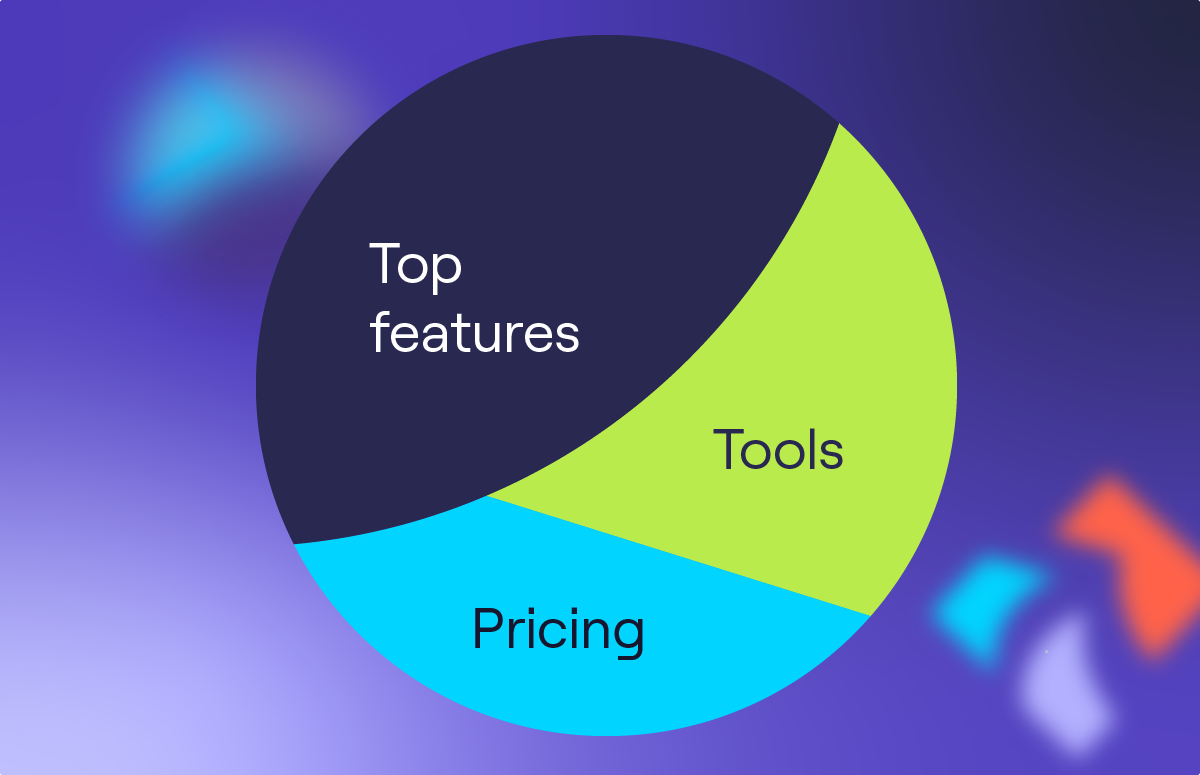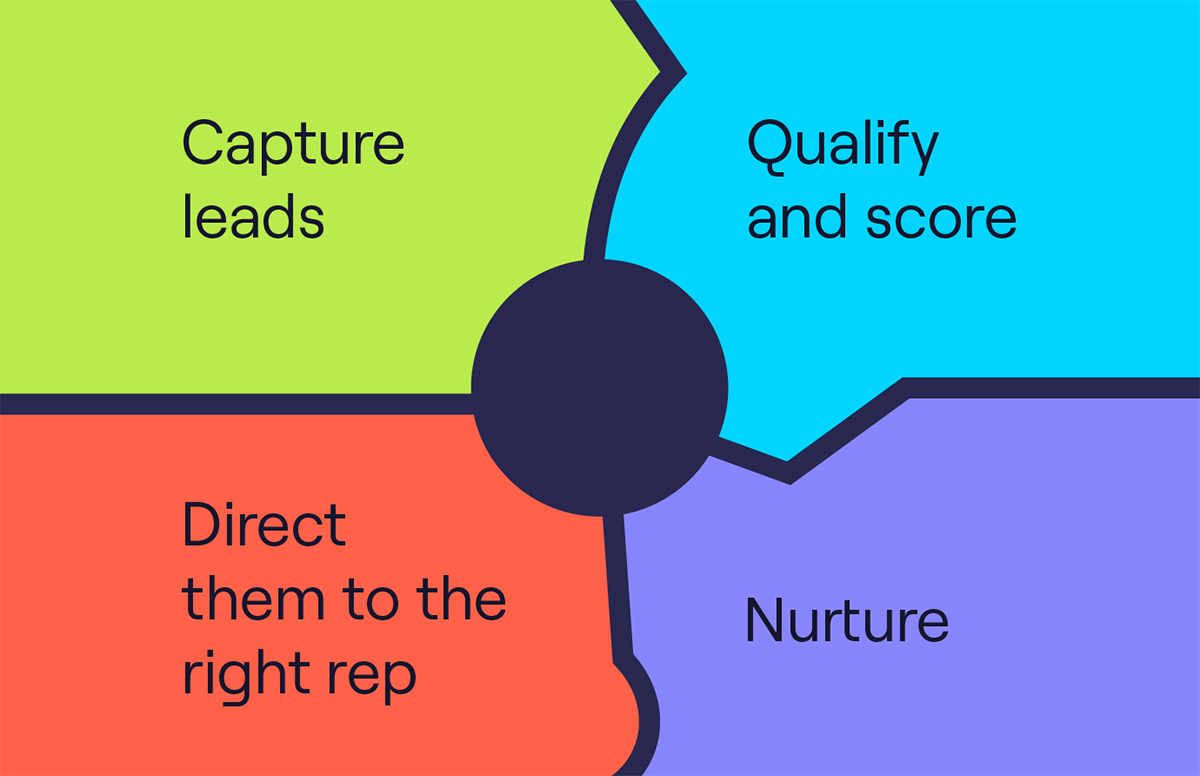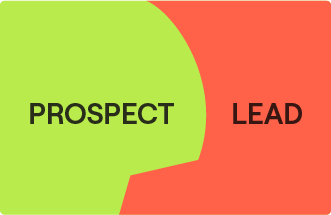LinkedIn Lead Generation: Advanced Strategies for 2025
Linkedin lead generation strategies:
LinkedIn lead generation has become the most powerful B2B prospecting channel.
With over one billion professionals on the platform, companies now have unprecedented access to decision-makers across industries worldwide.
However, as the platform matures and competition intensifies, standing out requires more sophisticated approaches than basic connection requests and generic messages.
In this guide, we’ll explore ten advanced strategies to help you identify, engage and convert high-quality LinkedIn prospects into valuable additions to your sales pipeline.
What is LinkedIn lead generation?
LinkedIn lead generation is the process of identifying, engaging with, and converting professionals on LinkedIn into qualified leads for your business.
It leverages LinkedIn’s unique professional database to connect with decision-makers who match your ideal customer profile.
Now, let’s get into our top LinkedIn lead generation strategies 👇
1. Leverage account-based marketing
Account-based marketing (ABM) flips traditional lead generation by targeting specific high-value accounts from the start rather than a broad audience. LinkedIn’s comprehensive targeting capabilities make it ideal for ABM strategies, as you can identify key accounts and decision-makers before you even begin outreach.
Step one:
Start by getting sales and marketing to agree on what makes an ideal account. Look at company size, industry, and location, but also consider growth indicators like recent funding or hiring trends.
Cognism's Sales Companion makes this easier by providing real-time signals about company growth, funding events, and hiring patterns.
Step two:
Next, use Cognism or LinkedIn Sales Navigator to create your target account lists. Click on the “Accounts” tab, select “Create List,” name it (e.g., “Tier 1 Accounts”), and use filters like industry, headcount, and location to identify matching companies.
To find decision-makers, go to “Lead Search,” select your account list, and filter by job titles and seniority level.
Here’s how you can use Cognism to do the same:
The best approach to increasing your chances of success is to target multiple stakeholders within each company, which is called “multi-threading.”
With your account and contact lists ready, you can create personalised outreach strategies for each tier, tracking success through connection and response rates.
Key points:
- Identify target accounts: Use LinkedIn’s search filters to pinpoint companies that match your ideal customer profile.
- Use a data provider to get contact data: Integrating tools like Cognism can refine your ABM approach by providing accurate contact data and insights, ensuring your outreach is targeted and effective.
- Engage decision-makers: Connect with key stakeholders within these accounts by sharing relevant content and personalised messages.
- Utilise matched audiences: Upload your target account list to LinkedIn’s Matched Audiences to serve tailored ads directly to these companies.
2. Use Sales Companion signal data
Timing is crucial in LinkedIn outreach. Sales Companion signal data helps you identify precisely when target companies might need your solution by monitoring real-time business events and changes.
.webp?width=500&height=500&name=signals_infographic%20-%20funding%20(1).webp)
After setting up your account-based marketing strategy on LinkedIn, Sales Companion can enhance your LinkedIn lead generation targeting by providing actionable signals about your target companies, including:
- Recent funding rounds or investments.
- Executive leadership changes.
- Department expansions (particularly in areas relevant to your solution).
- New product launches or technology implementations.
- Market expansion announcements.
After you’ve set up your target account lists as mentioned in the ABM section above, Sales Companion will send you signal data as it happens. So when you’re alerted to a significant change at a target company, you can immediately identify relevant decision-makers and reach out while the opportunity is fresh.
The best approach is to reference the specific signal in your LinkedIn outreach. For example:



I noticed your company just expanded into the EMEA market - our clients often find this is when they need stronger data solutions.
This timely, contextual outreach complements your ABM strategy and makes your LinkedIn messages more relevant.
Key points:
- Monitor activity: Monitor your prospects’ LinkedIn activity for potential interest or need indicators.
- Engage promptly: Respond to these signals with timely, personalised outreach to increase the likelihood of conversion.
3. Invest in LinkedIn lead generation ads
LinkedIn Ads are a powerful tool for reaching a targeted professional audience. With various ad formats and precise targeting options, they can significantly boost your lead generation efforts.
With 4 out of 5 LinkedIn members driving business decisions and 2× the buying power of average web audiences, your ad spend targets professionals actively making purchase decisions.
Start by creating a Campaign Manager account and setting up your first campaign:
Select “Lead generation” as your objective to access LinkedIn’s Lead Gen Forms, which pre-fill with member profile data for up to 5x higher conversion rates than sending users to your website.
Create a laser-focused target audience by combining:
- Account targeting: Upload your ABM account lists directly from Sales Companion.
- Job function and seniority: Target directors and above in IT, finance, or marketing.
- Skills targeting: Add specific technical capabilities relevant to your solution.
Test multiple ad formats simultaneously:
- Single-image ads with clear, benefit-focused headlines work best for initial awareness.
- Carousel ads showcasing specific product features drive higher engagement rates.
- Video ads earn 30% more comments per impression than static images in the LinkedIn newsfeed.
Key points:
- Choose the right Ad format: Based on your campaign goals, select your preferred type of LinkedIn advertising. Choose from sponsored content, message ads, or text ads.
- Target precisely: Utilise LinkedIn’s demographic filters to reach your ideal audience by job title, industry, or company size.
- Optimise lead gen forms: Incorporate LinkedIn Lead Gen Forms to streamline the lead capture process and increase conversion rates.
🔥Top tip! Combining lead generation LinkedIn Ads with Cognism's enriched data can enhance targeting accuracy and lead quality.
4. Set up a LinkedIn retargeting strategy
Salesforce data suggests generating a viable sales lead takes six to eight marketing touches.
Retargeting allows you to reengage users who have previously interacted with your brand, keeping you top of mind and encouraging conversions.
LinkedIn retargeting helps you deliver these crucial touchpoints by reconnecting with prospects professionally, rather than interrupting their personal social media browsing or daily web activities.
Integrating Cognism's data with your retargeting strategy can help you refine your LinkedIn retargeting efforts by providing deeper insights into your audience’s behaviour and preferences.
Start by segmenting your retargeting approach based on prospect engagement levels. In Campaign Manager, create three distinct audience categories:
- High-intent visitors: People who visited pricing pages, product demos, or comparison sheets (30-day window).
- Mid-funnel researchers: Those who downloaded resources or viewed multiple blog posts (60-day window).
- Early-stage awareness: Users who briefly visited your homepage or blog (90-day window).
For each segment, craft tailored messaging that addresses their specific stage in the buying journey.
For maximum B2B LinkedIn lead generation ROI, create exclusion audiences of current customers and very recent contacts to ensure your retargeting budget focuses solely on genuine prospects needing nurturing rather than those already in your pipeline.
Key points:
- Install the LinkedIn Insight tag: This tag tracks website visitors and their actions, enabling you to retarget them with relevant LinkedIn ads for lead generation.
- Create custom audiences: Segment your audience based on specific behaviours, such as page visits or form completions.
- Deliver personalised content: Serve tailored ads that address the specific interests or needs demonstrated by the user’s previous interactions.
5. Utilise a brand awareness strategy
Building recognition with your wider audience is essential for long-term pipeline growth on LinkedIn, as research shows 95% of potential B2B customers aren’t actively in-market at any given time.
Moreover, building brand awareness on LinkedIn establishes trust and positions your company as a thought leader in your industry.
Start by identifying what makes your brand distinctive in the market. Once you’ve clarified your unique positioning, develop content communicating this value while blending emotional appeal with practical insights.
LinkedIn’s B2B Institute found that emotional messaging outperforms purely rational content by up to 7x. Focus on these high-performing content types:
- Thought leadership articles addressing industry challenges.
- Case studies showcasing measurable client outcomes.
- Video content explaining complex topics in accessible ways.
- Data-driven infographics relevant to your audience’s pain points.
For maximum impact, combine organic posting with strategic paid promotion.
SaaS marketing expert Brendan Hufford conducted a 30-day experiment with thought leadership ads on LinkedIn that yielded impressive results.
His static posts featuring frameworks and real expertise achieved 12% CTR (vastly outperforming the 0.5-1% industry average), while his video content delivered 3.4% CTR with direct conversions. The campaign generated 178,000 additional impressions, 3,779 clicks, and 33 conversions at just £0.72 cost-per-click.
Hufford’s experiment shows that authentic expertise resonates more than polished marketing. This approach enhances the effectiveness of your LinkedIn lead generation campaigns, making prospects more receptive to your outreach.
Key points:
- Consistent content sharing: To engage your audience, regularly post valuable content, such as articles, case studies, and industry news.
- Employee advocacy: Encourage employees to share company content, expanding your reach and adding authenticity to your messaging.
- Engage with your network: Interact with followers by responding to comments and participating in discussions to foster community.
6. Get your team excited about social selling
Social selling involves leveraging social networks to find, connect, and nurture sales prospects. Empowering your team to engage in social selling can significantly impact lead generation.
Individual sales reps often lead the charge on LinkedIn, but your entire revenue team can amplify results when everyone participates in social selling activities.
From marketers and product specialists to customer success managers and executives, each team member brings unique perspectives that can attract different segments of your target audience.
Start by establishing a clear social selling programme with defined roles:
- Sales reps can focus on direct prospect engagement and relationship building.
- Marketing team members can create shareable content and track engagement metrics.
- Product specialists can share technical insights and answer detailed questions.
- Executives can promote thought leadership and build high-level connections.
- Customer success managers can share authentic user stories and testimonials.
Also, provide your team with practical tools like message templates, company hashtags, and a content repository of approved stats, case studies, and industry insights they can personalise and share.
Social selling tools like Cognism can support LinkedIn lead generation by supplying accurate contact information and insights, enabling more effective outreach.
You can also consider implementing a social advocacy platform like EveryoneSocial or Hootsuite Amplify to streamline content sharing across the team.
Key points:
- Provide training: Educate your team on LinkedIn lead generation best practices for engaging with prospects on the platform.
- Set clear goals: Establish measurable objectives for LinkedIn social selling activities to track progress and success.
- Recognise success: Celebrate wins and share success stories to motivate and inspire continued efforts.
7. Use LinkedIn’s Boolean search
LinkedIn Boolean search is a powerful yet underutilised tool for pinpointing ideal prospects on the platform. You can craft highly targeted searches that uncover the people you want to connect with by combining specific keywords with operators like AND, OR, and NOT.
Start with basic Boolean operators to refine your searches:
- Use quotation marks for exact phrases: “Chief Marketing Officer” will only show results with that exact title.
- Use AND to narrow results: “marketing director” AND “SaaS” finds marketing directors specifically in SaaS companies.
- Use OR to broaden searches: “VP Sales” OR “Head of Sales” OR “Sales Director” captures various senior sales titles.
- Use NOT to exclude terms: “CTO” NOT “founder” excludes technical founders from your search.
For more advanced prospecting, try combining operators with parentheses to create complex search strings. For example:
(“marketing manager” OR “marketing director”) AND (“B2B” OR “SaaS”) AND “London” NOT “intern"
This search would find marketing managers or directors who work in B2B or SaaS companies in London, excluding interns.
Cognism Sales Companion users can do one better and find LinkedIn users with even more filters, which makes Boolean searches even more powerful. You can filter by company size, growth rate, technology used, and recent job changes—all factors that might indicate a prospect’s readiness to buy.
Create saved searches for your ideal customer profiles to receive notifications when new prospects match your criteria.
Mastering Boolean search enhances LinkedIn B2B lead generation by allowing you to identify and connect with the right prospects.
8. Optimise LinkedIn lead gen forms
LinkedIn Lead Gen Forms simplify the lead capture process by auto-populating with a user’s profile data. This removes friction and increases conversion rates, especially on mobile devices. It does this by auto-populating fields with profile data.
You can implement these LinkedIn-recommended best practices to maximise results:
- Keep forms short with 3-4 essential fields instead of all 12 options.
- Ensure message consistency between your ad and form content for a seamless experience.
- Set up integrations with your CRM to enable quick follow-up, as response time significantly impacts conversion.
- Include an ungated content link for immediate value delivery in your thank you message.
- Test different form variations with varying segments of your audience to improve performance continuously.
Platforms like Cognism integrate seamlessly with B2B lead generation tools, enriching your LinkedIn lead generation form submissions with verified contact data to fast-track your outreach.
Key points:
- Limit form fields: Keep your forms short and sweet. Only ask for essential information, such as name, job title, and business email.
- Offer value: Incentivise users with something in return—a whitepaper, case study, webinar invite, or free trial.
- Test and tweak: A/B test different headlines, CTAs, and form lengths to find what resonates best with your audience.
- Follow up fast: Speed matters. The quicker your team follows up, the more likely you are to convert a lead.
9. Explore LinkedIn lead generation tools
While LinkedIn’s native features provide a solid foundation for lead generation, specialised tools can significantly enhance your results.
LinkedIn’s built-in tools offer powerful capabilities:
- Sales Navigator for advanced search and lead recommendations.
- Campaign Manager for running targeted ad campaigns.
- Lead Gen Forms for simplified data collection.
- LinkedIn Analytics for tracking post and page performance.
There’s no shortage of LinkedIn lead generation tools that can help scale your efforts, automating tedious tasks while maintaining a human touch.
For more specialised lead generation needs, consider these solutions:
- Cognism's Sales Companion helps identify decision-makers with verified contact data and provides real-time buying signals that indicate when prospects are ready to purchase. Cognism is often used with LinkedIn Sales Navigator because Sales Navigator does not include B2B data.
.jpg?width=100&height=100&name=KACIMI_EL-HADI%20(1).jpg)
“Cognism provides an interface that allows us to take data from LinkedIn in volume and reconcile it with the CRM. The level of targeting is very detailed and precise in the search, which allows us to import both volume and quality.”
- Chrome extensions like Kaspr to find email addresses while browsing profiles.
- Social selling platforms like Hootsuite or Buffer to schedule and manage content.
When selecting tools, prioritise those that offer data compliance features, particularly for European markets where GDPR compliance is essential.
Look for solutions that maintain connection between leads’ LinkedIn profiles and their contact information to enable personalised follow-up.
Using a comprehensive LinkedIn lead generation tool stack saves time, ensures higher accuracy, and increases conversion potential. Cognism, in particular, enables automated LinkedIn lead generation by combining powerful prospecting data with real-time intent signals.
Key points:
- Prospecting tools: Platforms like Cognism provide GDPR-compliant B2B data to layer into LinkedIn Sales Navigator lead generation workflows.
- Automation tools: Tools like Expandi and Zopto offer automated LinkedIn lead generation strategies for outreach, follow-ups, and connection sequences.
- Analytics platforms: Use LinkedIn Campaign Manager and third-party tools to measure ad performance, cost-per-lead, and campaign ROI.
10. Use LinkedIn Sales Nav alongside a data provider
LinkedIn Sales Navigator is a premium LinkedIn offering that provides advanced search capabilities, lead recommendations, and insights to help sales teams identify and connect with the right prospects.
However, Sales Navigator has significant limitations. While it shows you who to target, it doesn’t provide direct contact information like phone numbers or emails.
You’re also restricted to LinkedIn's messaging system unless you can find contact details elsewhere. This creates a significant gap between finding prospects and reaching them through your preferred channels.
This is where data providers like Cognism add tremendous value to your prospecting workflow:
- Cognism's Chrome extension integrates directly with Sales Navigator, allowing you to enrich LinkedIn profiles with verified phone numbers, email addresses, and additional firmographic data.
- The extension lets you bulk-select prospects from Sales Navigator search results and instantly access their contact information.
- You can export this enriched data directly to your CRM or sales engagement platform, seamlessly connecting LinkedIn prospecting with your outreach campaigns.
The workflow is straightforward: search for target accounts and prospects in Sales Navigator, activate the Cognism extension to add contact details to your results, select the leads you want to pursue, and export everything to your sales stack in a few clicks.
This combination turns LinkedIn from a research platform into an actionable lead generation engine.
Key points:
- Build target lists: Use Cognism filters to segment by seniority, geography, and company size.
- Track engagement: Monitor your saved leads’ LinkedIn activity so you can reach out at just the right time.
- Use smart links: Share trackable links with your prospects to gain insight into what they’re engaging with.
Wrapping up: lead generation with LinkedIn done right
Generating leads through LinkedIn is no longer just about sending out connection requests and hoping for the best. It’s about using data, strategy, and tools to cut through the noise and reach the right people with the right message at the right time.
Here’s a quick recap of what we’ve covered:
- Leverage Account-Based Marketing for precision targeting.
- Act on Sales Companion Signal Data to engage when intent is highest.
- Invest in LinkedIn Ads that convert with the help of lead-gen forms.
- Build a retargeting strategy to capture warm leads.
- Increase your visibility with a brand awareness plan.
- Get your sales team excited and trained in social selling.
- Use Boolean search to find your ideal prospects efficiently.
- Optimise your LinkedIn lead generation forms for maximum conversion.
- Experiment with LinkedIn lead generation tools that streamline and scale your efforts.
- Pair LinkedIn Sales Navigator with a trusted data provider like Cognism for impactful results.
Whether you’re focused on a LinkedIn lead generation strategy through ads, outreach, or content marketing, the key lies in consistency and continuous optimisation.
Ready to supercharge your LinkedIn lead generation?
LinkedIn gives you access to a global network of professionals—but it’s only half of the equation. To truly scale your lead generation with LinkedIn, you need accurate, compliant, and enriched contact data.
That’s where Cognism comes in.
Cognism’s platform offers:
- Diamond Data® - Phone-verified mobile numbers that connect you with decision-makers 3x more often than industry averages.
- Sales Companion browser extension for seamless LinkedIn Sales Navigator integration.
- Real-time buying signals reveal when companies are ready to purchase.
- AI Search that builds targeted prospect lists 74% faster.
- Multi-threading capabilities to engage entire buying committees.
- GDPR and CCPA compliance with comprehensive DNC list protection.
- Integrations with LinkedIn and CRM tools.
Whether you’re running LinkedIn lead generation campaigns, using LinkedIn for sales lead generation, or building out complex LinkedIn lead generation strategies, Cognism ensures you’re always one step ahead—connecting with the right people, at the right time, with the right message.
Discover how Cognism can make your LinkedIn campaigns smarter, faster, and more effective. Book a demo today and see the difference for yourself. 👇



